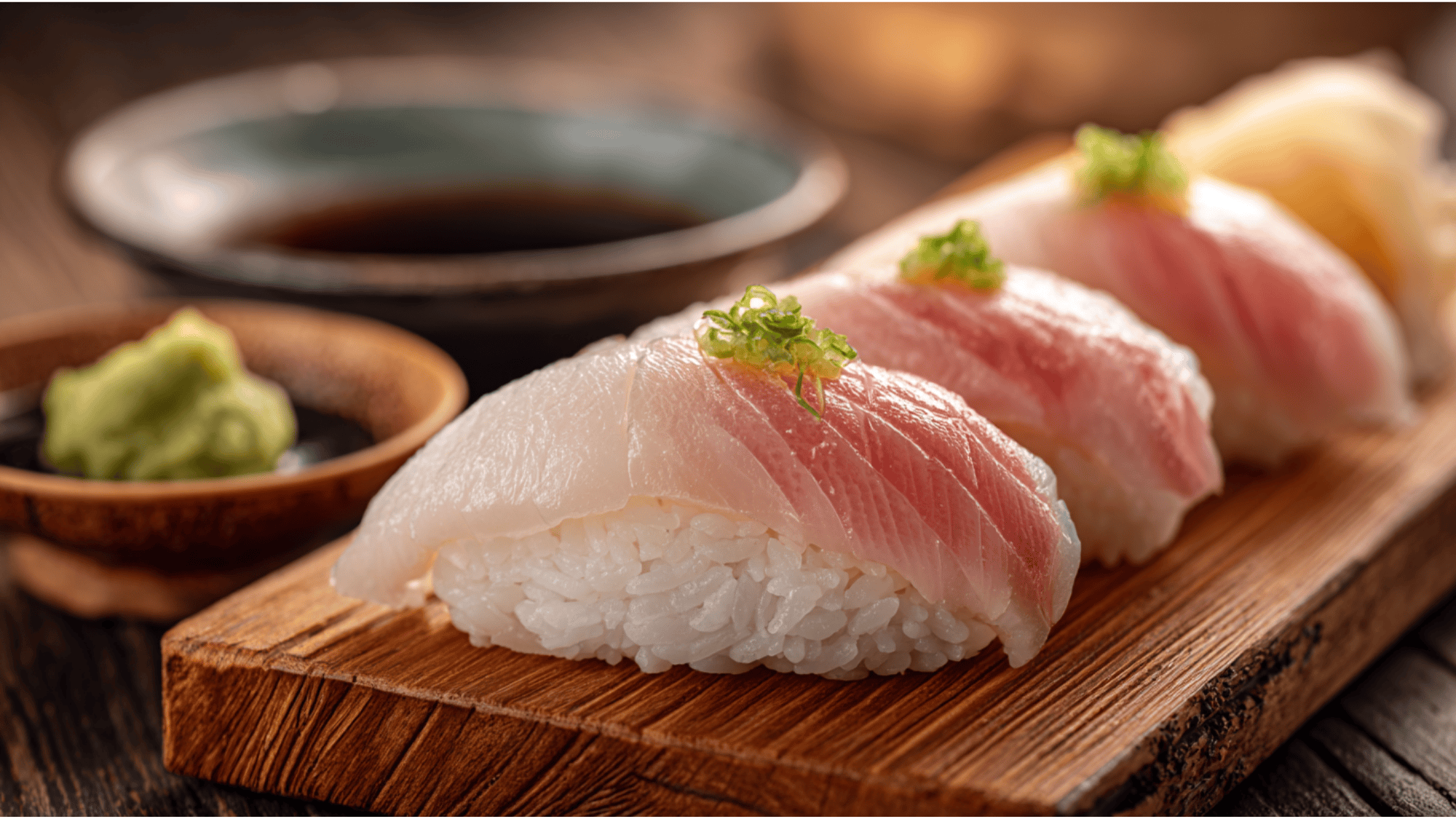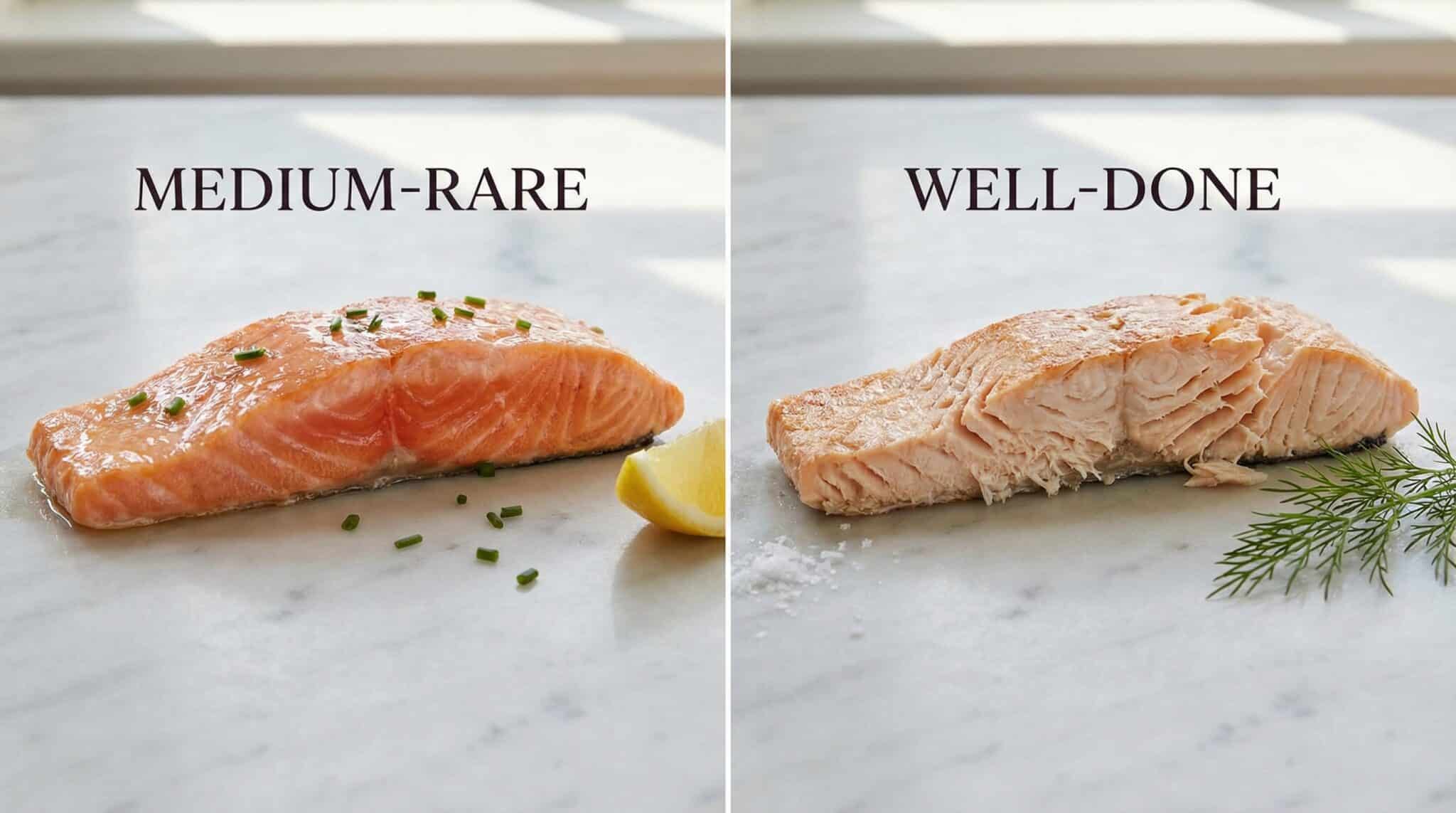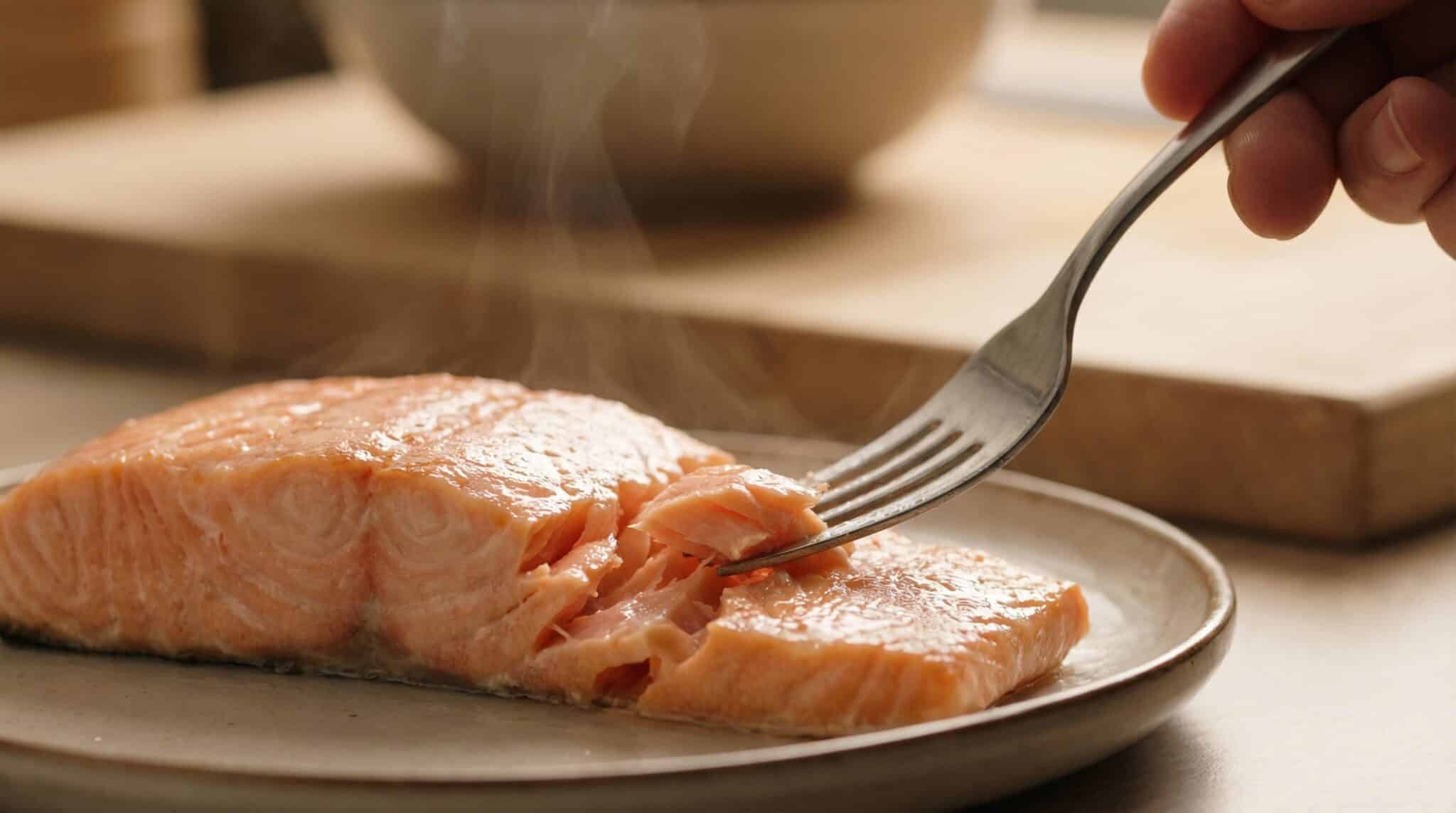If you have ever taken a bite of buttery, melt-in-your-mouth sushi and wondered what kind of fish made it so delicious, chances are it was yellowtail.
Yellowtail is a favourite in sushi bars around the world.
It’s smooth, rich, and has just the right balance of flavour, making it perfect for both sushi and sashimi.
In this blog, we will break down everything you need to know: what yellowtail really is, how it differs from other fish, and how you can make your own yellowtail sushi or sashimi right at home.
Why It’s Perfect for Sushi?
Yellowtail is a fish known for its rich flavour and smooth texture.
The most common type used in sushi is the Japanese amberjack, called hamachi when young and buri when fully grown.
This fish belongs to the jack family and is loved for its high fat content, which gives it a buttery, melt-in-your-mouth feel.
What makes yellowtail ideal for sushi and sashimi is its balance of firmness and tenderness.
It’s easy to slice, holds its shape, and pairs well with rice and soy sauce.
Plus, its mild, slightly sweet flavour appeals to both sushi beginners and seasoned fans.
If served raw or lightly seared, yellowtail always brings a fresh, luxurious bite to your plate.
Japanese Size Classifications of Yellowtail
In Japan, yellowtail (Seriola quinqueradiata) isn’t just one name; it changes based on the fish’s size and age.
These names reflect the fish’s growth stages, which also affect its flavour and fat content.
Here’s a breakdown of the classifications used in Japanese markets and sushi kitchens:
- Mojako – This is the baby stage, when yellowtail are just tiny fry. At this point, they’re not yet used for sushi.
- Inada – A young wild yellowtail, usually under 2 feet long. It has a firmer texture and lighter flavour, ideal for a more subtle sushi experience.
- Warasa – A mid-sized fish with a more developed body and slightly richer taste. It marks the transition to a fattier profile.
- Buri – The full-grown adult, typically caught in winter when it’s at its fattiest and most flavorful. Highly prized in traditional sushi.
- Hamachi – A farm-raised version, harvested at the inada stage but often much richer due to controlled feeding. This is the buttery, melt-in-your-mouth yellowtail most commonly served in sushi bars.
These terms help sushi chefs choose the right fish for the perfect texture and flavour in every bite!
Ingredients You’ll Need for Yellowtail Sushi
| Ingredient | Quantity |
|---|---|
| Sushi-grade yellowtail | 200–250 grams |
| Sushi rice (short-grain) | 1 cup (uncooked) |
| Rice vinegar | 2 tablespoons |
| Sugar | 1 tablespoon |
| Salt | ½ teaspoon |
| Nori (seaweed sheets) | 2–3 sheets |
| Wasabi | As needed |
| Soy sauce | For dipping |
| Pickled ginger (gari) | Small handful |
| Shiso leaf (optional) | 2–3 leaves |
Complete Preparation Method of Yellowtail Sushi at Home
Making yellowtail sushi at home might sound tricky, but with a little prep and the right ingredients, it’s totally doable!
If you’re going for nigiri or sashimi-style, this simple guide will walk you through the basics.
Step 1: Prepare the Sushi Rice
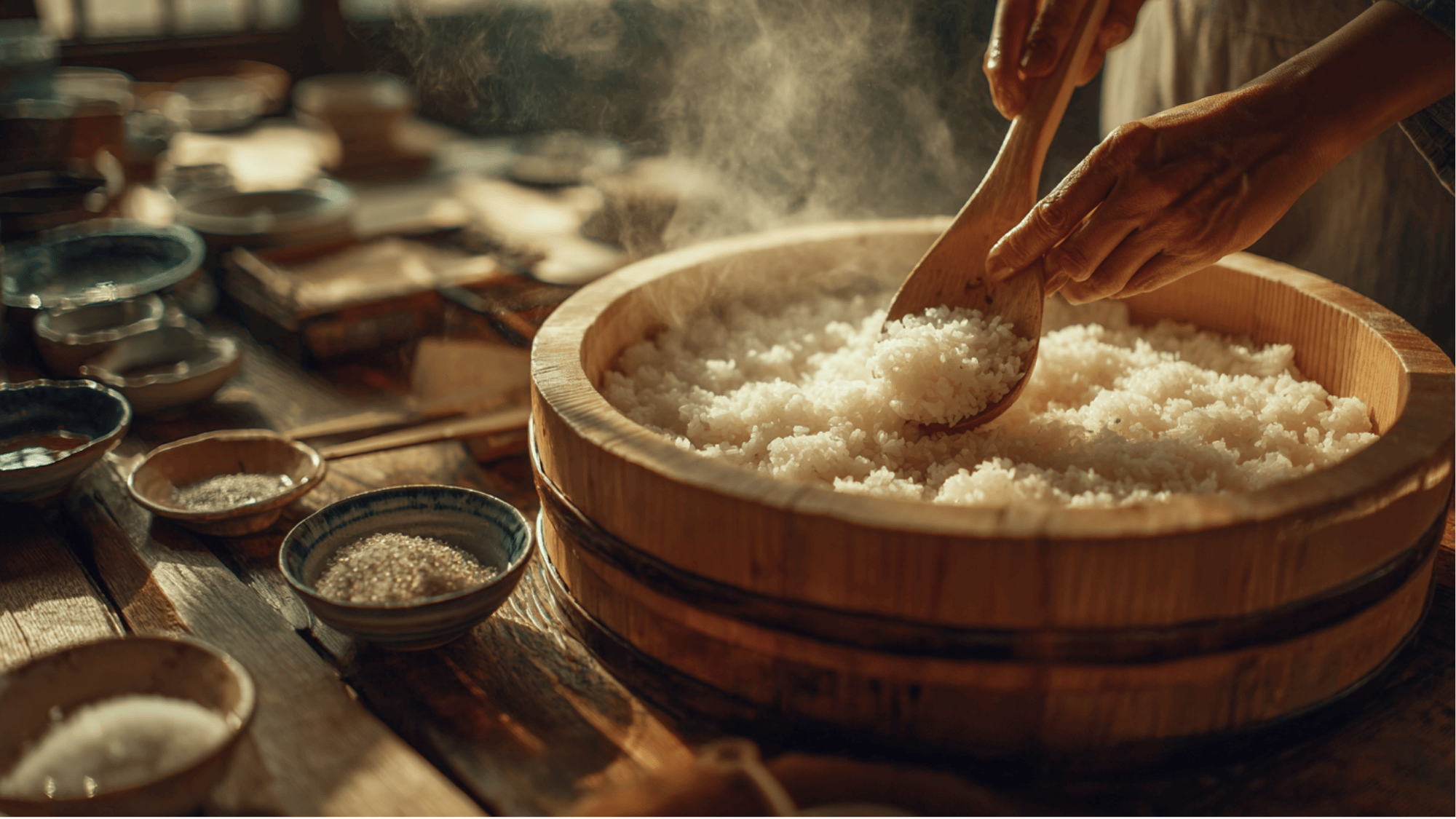
Start by rinsing 1 cup of short-grain sushi rice under cold water until the water runs clear. Cook the rice using a rice cooker or stovetop.
Once done, mix it with 2 tablespoons rice vinegar, 1 tablespoon sugar, and ½ teaspoon salt.
Gently fold and fan the rice to cool it to room temperature.
Step 2: Slice the Yellowtail
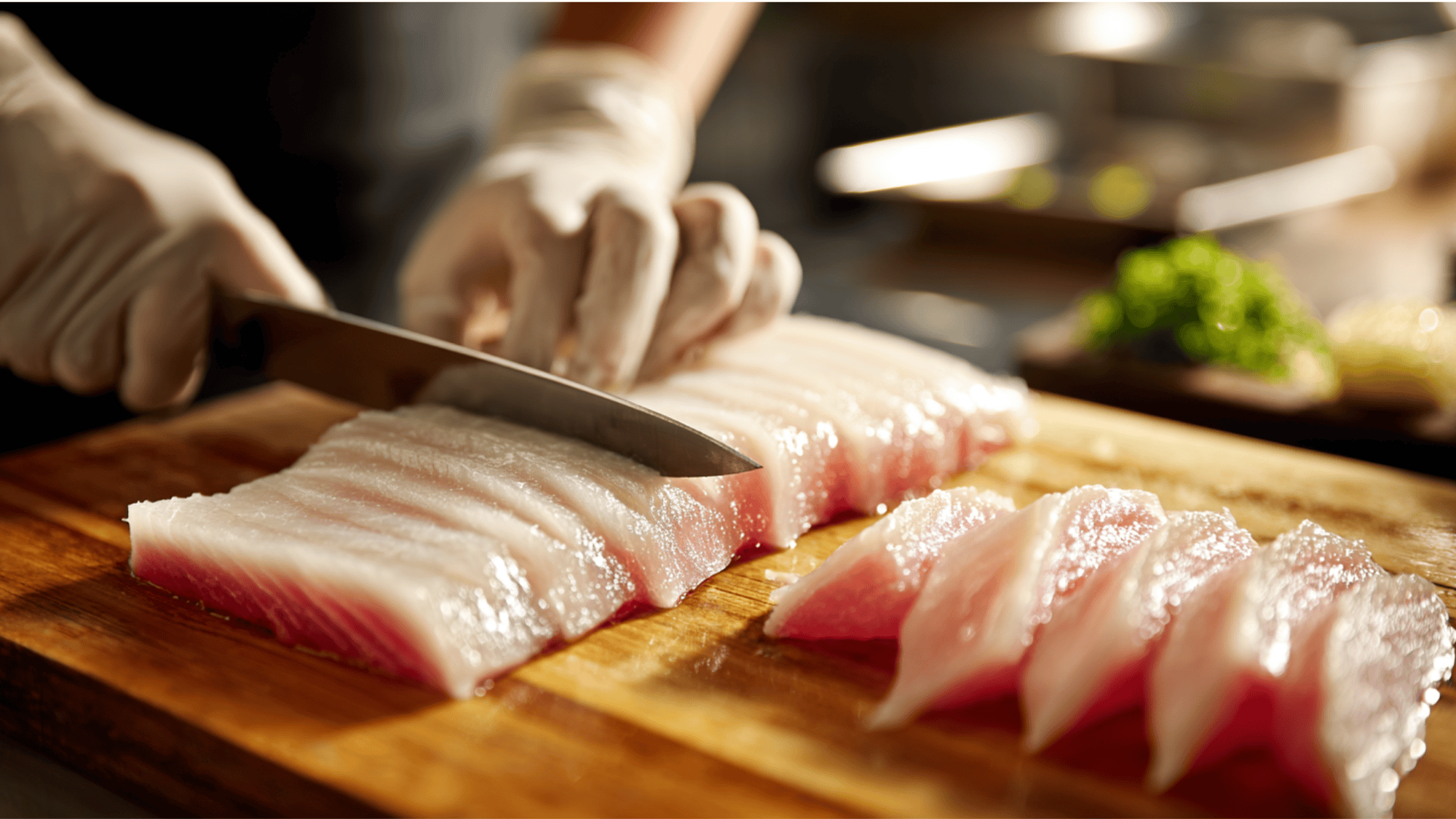
Make sure your yellowtail is sushi-grade and properly thawed if previously frozen.
Using a very sharp knife, slice the yellowtail against the grain into thin, even slices about 2–3 inches long.
Each slice should be firm, smooth, and just thick enough to sit neatly over a rice mound.
Step 3: Form the Nigiri Rice Base
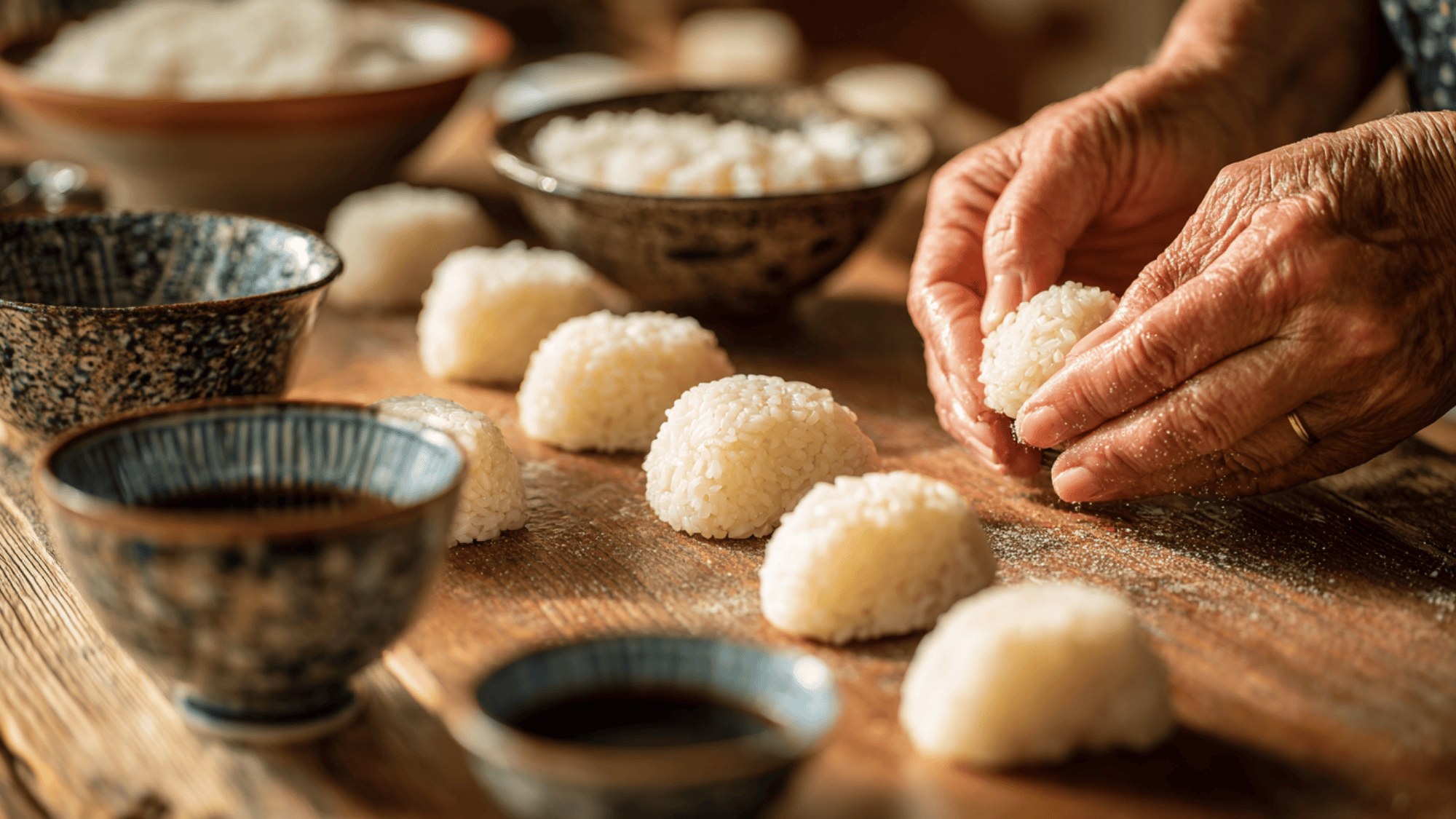
Wet your hands with a mixture of water and a little rice vinegar to prevent sticking.
Then, take a small handful of sushi rice and shape it into a firm oval, about the size of two fingers.
The rice should hold together but not be too tightly packed, aiming for light but stable.
Step 4: Assemble the Nigiri
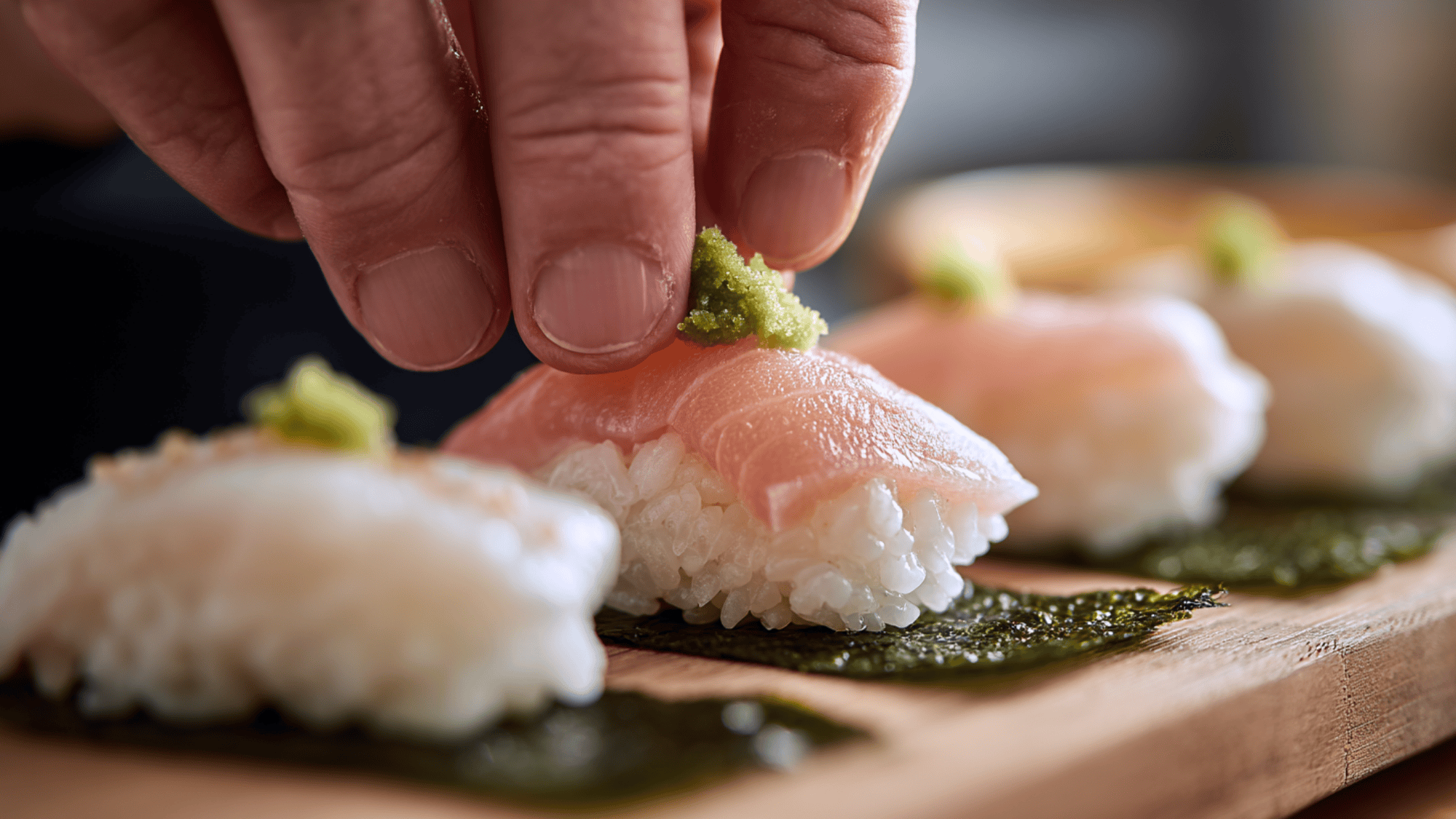
Optional but traditional, add a small dab of wasabi on top of the rice.
Gently place a slice of yellowtail over the rice, pressing lightly so it sticks.
You can press the sides slightly to keep it neat. If desired, wrap a thin strip of nori around the middle for extra hold.
Step 5: Plate and Garnish
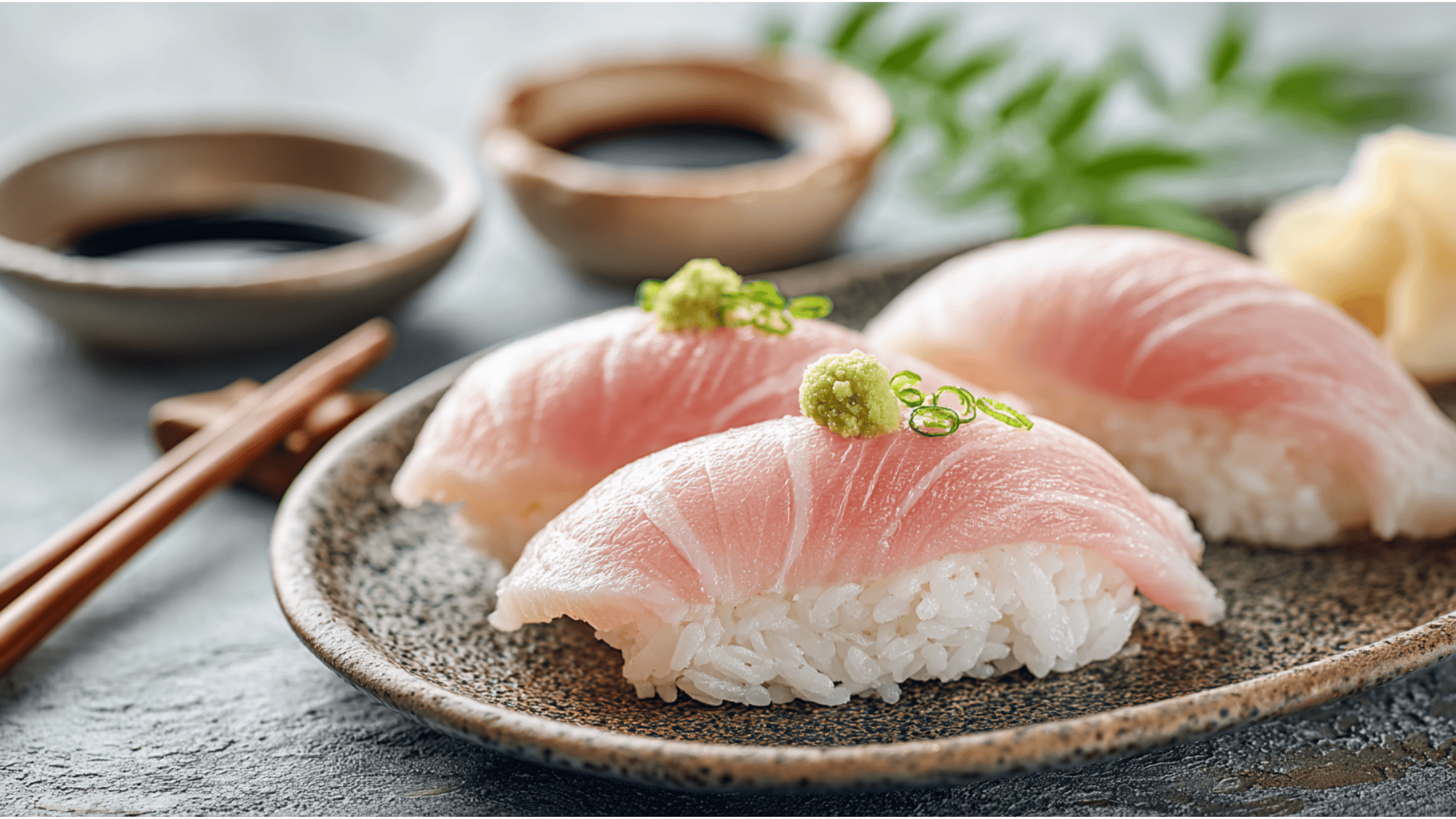
Arrange your yellowtail sushi neatly on a chilled plate or sushi board.
Then, garnish with pickled ginger, wasabi, and a small dish of soy sauce for dipping.
For extra flair, add shiso leaves or a light drizzle of ponzu sauce.
Serve immediately to enjoy the fresh, buttery flavour at its best.
Tasty Yellowtail Sushi Ideas You’ll Love to Try
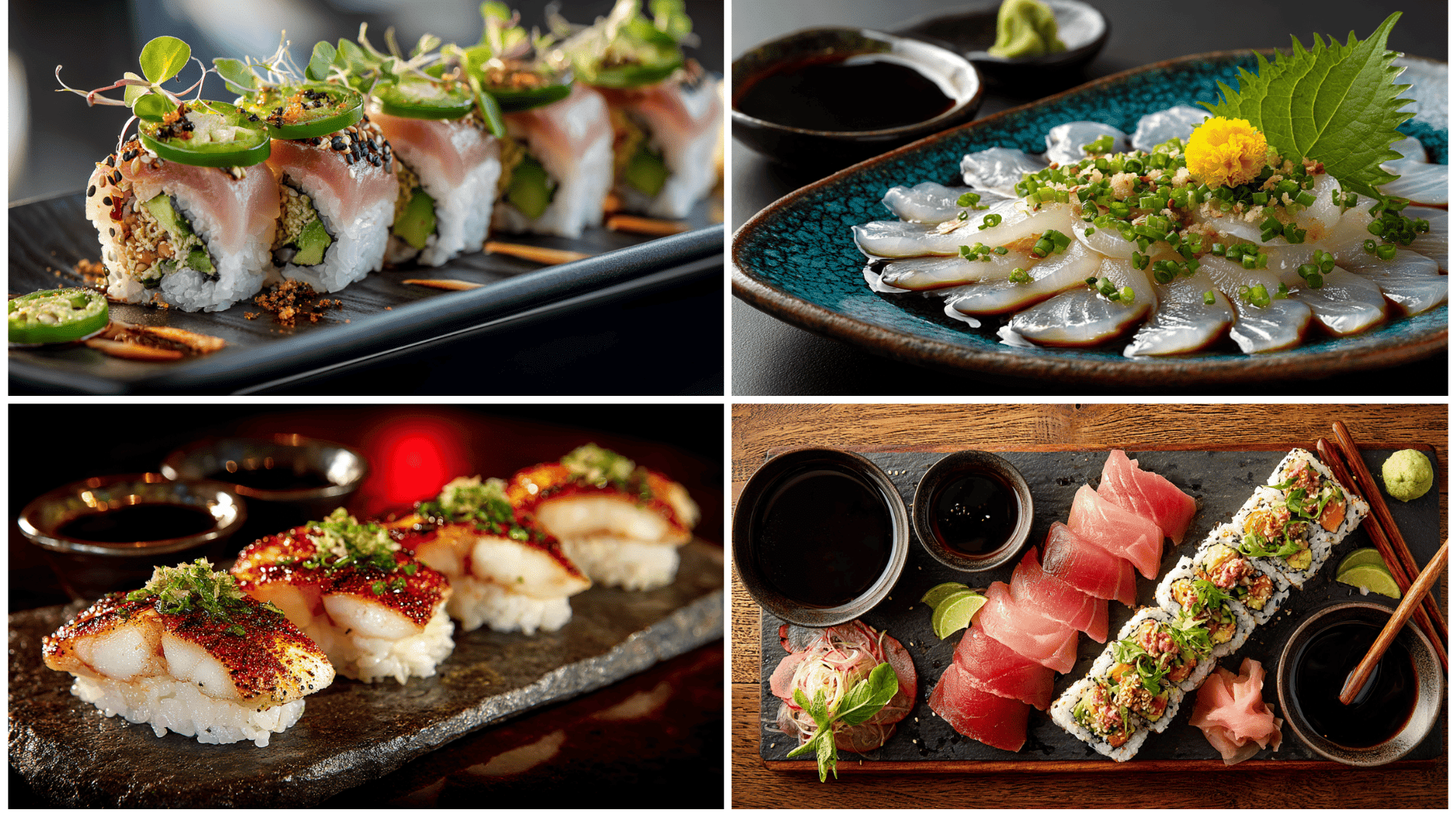
If you’re a sushi beginner or a home chef looking to impress, these recipes will help you make the most of this buttery, flavorful fish.
1. Yellowtail Jalapeño Roll
Spice things up by pairing yellowtail with fresh jalapeño slices and a hint of yuzu or ponzu sauce.
Roll it with sushi rice and nori, then top it with extra yellowtail and thin jalapeños for a fiery twist.
This one’s perfect if you like a bit of heat with your sushi!
2. Yellowtail Sashimi with Ponzu
Skip the rice and go straight for the fish. Slice yellowtail sashimi-style and serve with a drizzle of ponzu sauce, a sprinkle of green onions, and grated daikon radish.
This refreshing dish highlights yellowtail’s clean taste and makes for a light, tasty appetizer or main course.
3. Seared Yellowtail (Aburi Style)
Take a blowtorch or hot skillet and lightly sear the top of each yellowtail slice.
The quick sear adds a smoky flavor while keeping the inside buttery and raw.
Serve it nigiri-style or on its own with garlic chips and a soy-based sauce for dipping.
4. Yellowtail Sushi Platter
A Yellowtail Sushi Platter is a stunning combination of textures and flavors that highlights the versatility of this prized fish.
Featuring buttery yellowtail nigiri, spicy jalapeño-topped rolls, and delicate sashimi drizzled with ponzu, the platter offers something for every sushi lover
Health Benefits of Yellowtail Sushi
| Nutrient/Benefit | Why It Matters |
|---|---|
| Omega-3 Fatty Acids | Supports heart health, reduces inflammation, and boosts brain function |
| High-Quality Protein | Helps build and repair muscles, and keeps you full longer |
| Vitamin D | Supports strong bones and immune system function |
| Low in Saturated Fat | A leaner protein option compared to many red meats |
| B Vitamins (B6, B12) | Boosts energy, aids brain health, and supports red blood cell formation |
| Selenium | Acts as an antioxidant and supports thyroid function |
| Low Calorie | Great for those watching their weight without sacrificing flavour |
How to Serve and Eat Yellowtail Sushi the Right Way?
Sushi isn’t just about taste; it’s also about tradition, presentation, and respect for the ingredients.
Making yellowtail sushi at home or enjoying it at a restaurant can be even more special when you know how to serve and eat it properly.
Serving Suggestions
- Chill the plate before serving sashimi or nigiri to keep the fish fresh and firm.
- Garnish with shiso leaves, pickled ginger, and wasabi on the side, not on the sushi itself.
- Offer soy sauce in a small dish for dipping, but avoid soaking the entire piece.
- Pair with light sake or green tea to complement the buttery texture of yellowtail.
- Serve nigiri and sashimi in small portions for a more refined, enjoyable experience.
Conclusion
From its melt-in-your-mouth texture to its rich flavor and cultural importance, yellowtail is truly a sushi superstar.
If you plan to slice sashimi for a quiet night in or make rolls for a sushi party, yellowtail brings restaurant-quality flavor to your table.
Just remember: fresh ingredients, simple technique, and a little respect for tradition go a long way.
So grab your chopsticks and enjoy every bite like a true sushi lover.



